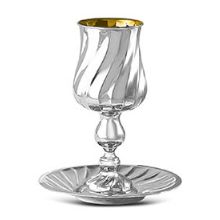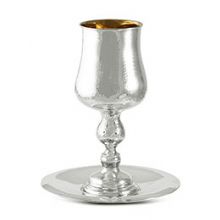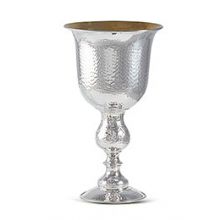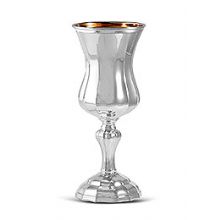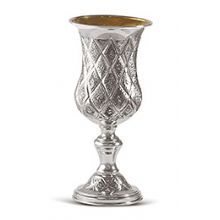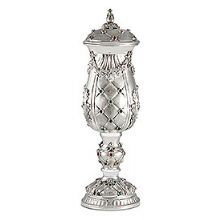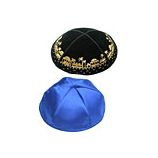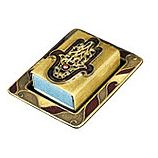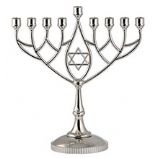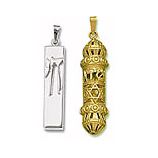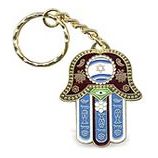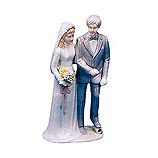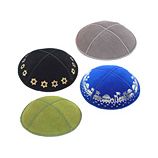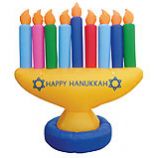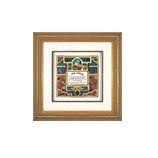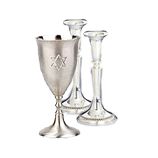Elijah Cups

Sterling Silver Elijah or Eliyahu cups, a prominent traditional part of every Seder table. Browse our phenomenal collection of Sterling Silver Elijah cups or in Yiddish "Eliyahu Cup". We carry a wide selection from artists and silver craftsmen across the globe. Most of our Elijah cups can be personalized by engraving, you will be given the option as you proceed to the shopping cart. For any questions feel free to call us @ 800-336-2291.
-
Sterling Silver Elijah Wine Cup - Optional set
Item # GS-301Price $958.75 -
Sterling Silver Elijah Wine Cup - Optional Set
Item # 4558-13Price $1,101.85 -
Sterling Silver Elijah Wine Cup
Item # 04559Price $782.80
-
Sterling Silver Elijah Wine Cup
Item # 5742Price $545.00 -
Sterling Silver Elijah Wine Cup
Item # EC-19Price $713.48 -
Sterling Silver Elijah Wine Cup
Item # GS-112Price $2,438.13
Elijah’s cup stands proudly on every Seder night table, generally the largest, most ornate goblet on an elaborately and ritually set table. The traditional reason for Elijah’s cup is simple – while the seder refers to the ‘arba leshonot geula’ or 4 words of redemption – namely ‘VeHotzeiti’ (I will take out/took out), ‘VeHezalzti (I will save/have saved), VeGa’alti (I will redeem/have redeemed), and ‘VeLakachti’ (I will take/took), , there is actually a fifth term used in the bible – VeHeveti’ (I will bring/brought). There is much conjecture, that in fact the fifth term refers to the time of the Messiah – which tradition states Elijah will herald in. Since all five terms of redemption, thru a clever literary device, can be read either in the past or in the future, Jews believe that their first redemption was on Passover – and the second will also be on Passover.
Elijah is connected to the Messiah in the book of Malachi where it says: “Behold, I will send you Elijah the prophet before the great and terrible day – which is understood, in Jewish tradition, to be the coming of the Messiah. He also shows up in other important Jewish ceremonies – such as the ‘Havdalah’ heralding out the Jewish Sabbath, and Elijah’s chair at a ‘Brit’ or circumcision.
As the Seder continues after the meal – Elijah’s cup plays a somewhat fantastical role especially for the children. As the door is opened when ‘Shfoch Hamatcha’ (Pour your Anger) is recited, the children eagerly wait to see if Elijah (who is supposed to be visiting every Jewish home on Seder night), will come to taste the wine from his goblet set out specially for him. After all his thirsty work wandering the globe. Some parents even shake the table a bit to give the illusion that Elijah did in fact take a sip, just to be polite.
Elijah’s cup is often referred to as the fifth cup and it is to be poured right before the grand Hallel is recited ( RamBam Chametz u matza 8,10 ). As opposed to the first 4 cups this cup is not only not obligatory but is not even drunk . In fact after the 4th cup only water is allowed ( RamBam Chametz u Matza 8,10). So how did this undrinkable cup become a symbol of the Seder night itself? And why is it named after Eliyahu the Prophet? The first Misnah in the tenth chapter of PESACHEEM seems to hint that 5 cups are permissible to drink as it says “no one should have less than 4 cups of wine” less no but more maybe? In any case the SAFEK or doubt whether a 5th cup was to be drunk would be another quandary that Elijah would solve. That would go together with the very famous acronym of תיקו which appears in many places in the Talmud. This acronym spelled out “the Tishbite (Elijah was called a Tishbite) will answer all perplexing questions. He will also answer this quandary about the 5th cup. Some attribute Elijahs name to this cup to the reknowned Rabbi Elijah ben Shlomo Zalman better known as the Vilna Gaon. Before his time this fifth cup was not referred to as Elijahs cup.
While any cup will do, many people, for the Hidur Mitzva use a special, more elaborate, more ornate, larger goblet for Elijah’s cup. Unfortunately, we only have examples of these Jewish ceremonial objects are only from as far back as the 19th century. A common theme on these goblets is the return of Zion or redemption. One famous cup features the Messiah entering Jerusalem on a donkey, led by Elijah blowing a ram's horn, while David is playing his harp.



